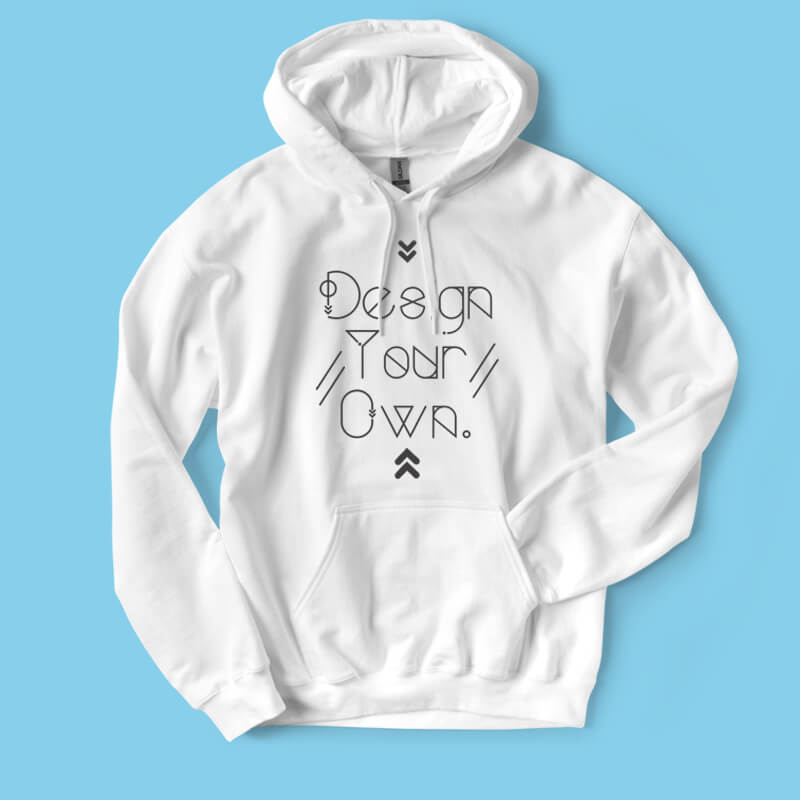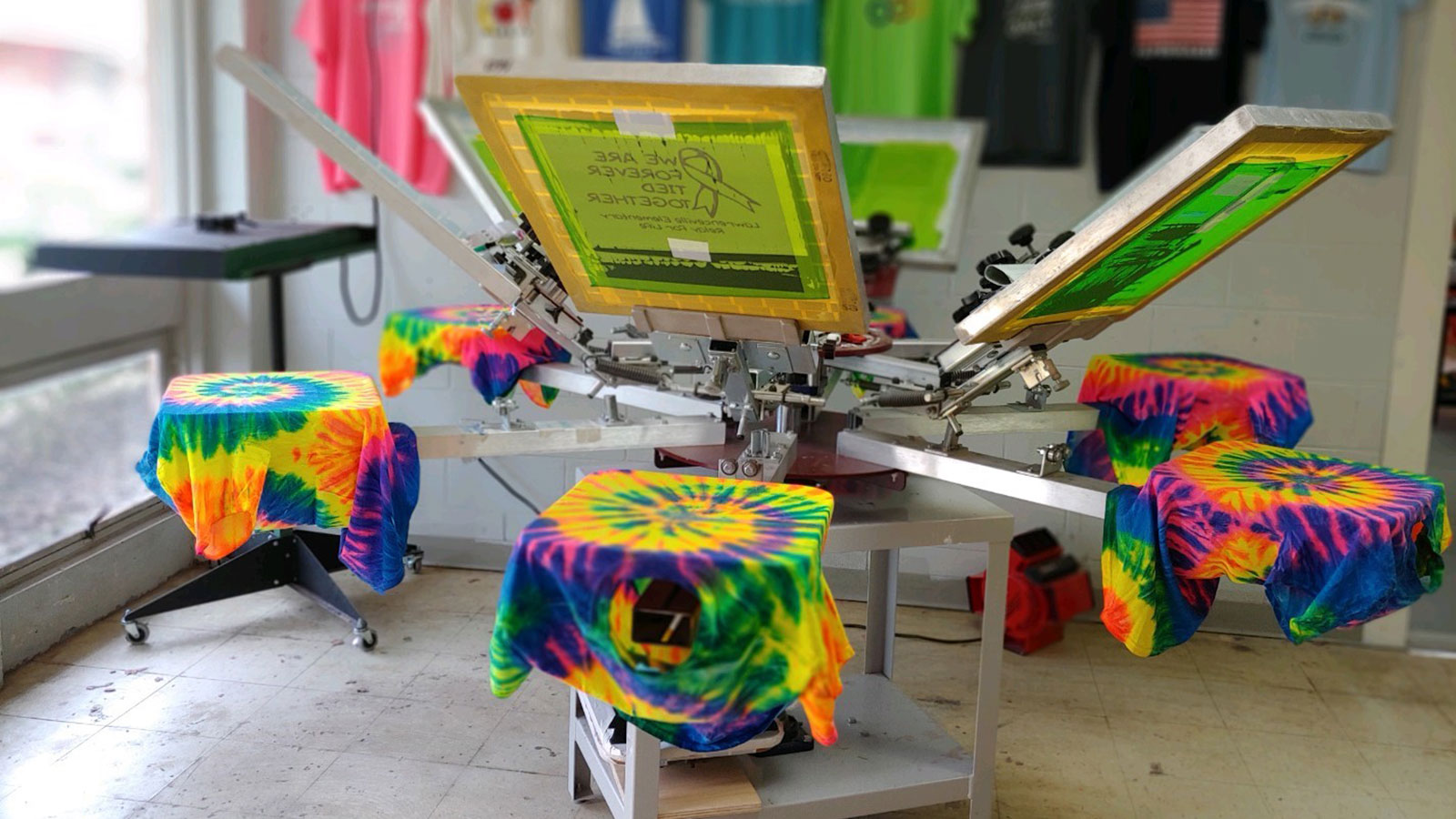Premium Screen Printing Kit for Business Startups
Wiki Article
Display Printing Uncovered: Whatever You Required to Learn About Tee and Garment Printing Techniques
If you have actually ever before wondered exactly how those dynamic designs wind up on your favorite t-shirts, you remain in the right place. Screen printing is an interesting technique that combines art with method, providing limitless possibilities for creativity. Comprehending the basics, from devices to ink choices, can significantly influence your results. Ready to explore the necessary components that make screen printing an art kind? Allow's discover the information that can boost your projects.
The Basics of Display Printing: Exactly How It Functions
When you dive right into screen printing, you'll find it's both a scientific research and an art. At its core, display printing entails creating a stencil, or screen, that permits ink to pass via just in specific locations (screen printing kit). You begin by picking your layout and preparing your screen with a light-sensitive emulsion. As soon as you reveal this emulsion to light, it sets, leaving your design as an adverse area.Next, you'll blend your inks and prepare your printing surface. Placement the screen over the material, after that utilize a squeegee to push ink via the display onto the garment. This process needs accuracy, as you want clear, vibrant prints. After printing, you'll treat the ink with warmth, ensuring it complies with the material and lasts with washes. Each action is essential, and understanding them will certainly elevate your screen printing abilities, transforming simple garments right into special, expressive pieces.
Kinds of Display Printing Methods
When you realize the fundamentals of screen printing, it's time to explore the various techniques that can raise your designs. One popular approach is traditional screen printing, where ink is pressed through a stenciled screen.If you're intending for great information, take into consideration discharge printing. This method removes color from the material, leaving a soft, vintage look. Another option is plastisol printing, recognized for its toughness and brilliant colors, making it a favored for lots of brand names. Finally, explore halftone printing to produce gradient impacts and intricate styles. Each technique has its special appeal, so don't hesitate to try them out to find what suits your design best!
Essential Equipment for Screen Printing
To attain stunning lead to display printing, having the right tools is essential. First, you'll need a sturdy screen printing framework, which holds the mesh that transfers your layout onto the garment. Next off, invest in high-grade squeegees; these are important for applying ink uniformly across the display. You'll likewise require an excellent direct exposure unit to create your displays, in addition to a washout cubicle for cleansing them after use. A reliable warmth resource, like a conveyor dryer or warm press, is crucial for treating your prints to ensure long life. Do not neglect a proper work area, equipped with tables and storage for your supplies. Protective gear, such as handwear covers and masks, will keep you risk-free from chemicals and inks. With the right tools, you'll be well on your way to producing professional-quality prints.Choosing the Right Inks and Products
When picking inks and products for screen printing, you need to consider the kind of ink that works best for your project. Think of textile compatibility to assure your layouts look terrific and last lengthy. Discover environmentally friendly ink alternatives to make your printing procedure more lasting.Kinds Of Screen Inks
Picking the ideal screen ink is important for achieving vivid, sturdy prints that satisfy your project's needs. There are numerous sorts of screen inks to examine. Plastisol ink is prominent for its versatility and simplicity of usage, providing exceptional shade opacity on dark fabrics. Water-based ink, on the other hand, offers a softer feel and is eco-friendly, making it perfect for those aiming to lessen their ecological impact. Release inks remove dye from the fabric, leading to a soft, classic appearance however require certain handling. Ultimately, specialized inks, such as glow-in-the-dark or metallic, can add distinct impacts to your designs. Assess your project needs and choose the ink that aligns ideal with your preferred end result.
Material Compatibility Considerations
Understanding fabric compatibility is important for achieving top notch display prints, specifically considering that various products react uniquely to numerous inks. When picking inks, consider the material type-- cotton, polyester, or blends. For cotton, water-based inks work well, using gentleness and breathability. Polyester, on the other hand, frequently requires plastisol inks for much better bond and dynamic colors. You could require to use a combination of both kinds if you're printing on blends. Always check your inks on example fabric to assure they stick correctly and maintain shade honesty. Additionally, remember that fabric weight and texture can influence the final result, so choosing the appropriate ink and material combination is essential for your task's success.Eco-Friendly Ink Options
Green inks are becoming a popular choice for screen printers that wish to lessen their environmental impact while keeping top quality. When picking inks, take into consideration water-based inks, which are much less harmful t-shirt printing and simpler to tidy up compared to typical solvents. These inks bond well with textiles, supplying vivid outcomes without hazardous chemicals. You could also discover eco-solvent inks that utilize fewer volatile natural compounds (VOCs), making them a much safer option for both your health and wellness and the world.Furthermore, try to find inks made from sustainable sources, such as soy or vegetable-based choices. By selecting the best inks and products, you'll not just produce sensational styles yet likewise add to a much more sustainable printing procedure. Make the button, and your prints will certainly reflect your dedication to the environment!
Preparing Your Layout for Display Printing

Submit Format Requirements
To assure your layout looks vivid and sharp on textile, you'll need to pay close attention to file style demands for display printing. Make certain your layout has a transparent background to avoid undesirable white sides on your prints. Keep shade settings in mind; CMYK is conventional for display printing, so convert your RGB creates as necessary.Color Separation Techniques
Color separation is a crucial action in preparing your design for display printing, and mastering it can greatly improve your print high quality. You'll require to break your design into specific shades, as each color calls for a separate display during printing. Beginning by identifying all the shades in your layout and develop layers each. You can utilize software program like Adobe Photoshop or Illustrator to isolate and separate colors successfully. Be certain to conserve each layer as a separate documents, commonly in a style like TIFF or PSD. This accuracy not just ensures precise shade representation but likewise streamlines the printing process. By taking note of shade splitting up, you'll accomplish specialist and vivid results in your screen-printed garments.Resolution and Dimension
Attaining the ideal cause display printing starts with assuring your layout has the best resolution and size. Preferably, your art work needs to be at the very least 300 DPI (dots per inch) for sharp, clear prints. If you make use of lower resolution, your end product might look pixelated and amateur.When it concerns size, take into consideration the dimensions of your print area. Style your artwork to match the last print dimension, preferably creating it in the real measurements you'll be printing. This method, you'll avoid any unexpected scaling problems.
Constantly inspect your style in both vector and raster layouts. Vector graphics can be scaled without losing high quality, making them perfect for screen printing. Preparing properly will guarantee your design looks amazing on every garment!
Step-by-Step Screen Printing Refine
Display printing is a vibrant procedure that permits you to create dynamic styles on different surface areas. To begin, you'll require a display, emulsion, and your picked ink. Prepare your screen by cleansing it extensively. Next, apply the emulsion uniformly and allow it completely dry in a dark location. As soon as completely dry, expose your display to light with your design positioned on it, which will set the solution where the light hits, producing a stencil - screen printing kit.After cleaning out the unexposed emulsion, your screen is all set. Set it up on your printing surface and align your garment underneath it. Pour ink onto the display and utilize a squeegee to push the ink through the pattern onto the fabric. Lift the screen thoroughly and allow the print dry. Heal the ink using warm to assure durability. That's it! You've successfully display published your design.
Tips for Effective Display Printing Projects
While you're diving right into your display printing projects, keep in mind that prep work is crucial to success. Begin by gathering all your products-- inks, squeegees, garments, and displays. A tidy workspace aids protect against undesirable mistakes, so neat up prior to you begin.Next, confirm your art work is high-resolution and properly sized for your garment. Test your screen for proper exposure and clean it extensively to stay clear of spots. When mixing your inks, comply with the producer's standards to accomplish the appropriate consistency.
Throughout printing, apply even stress with your squeegee for constant results. Don't hurry; take your time to verify each print fulfills your criteria. After printing, allow your garments completely dry completely before handling or packaging them.
Lastly, always maintain a sample of your work for future referral. By doing this, you can examine your progress and boost your techniques with time. Happy printing!

Often Asked Questions
Exactly how Long Does It Require To Establish up a Screen Printing Task?
Setting up a screen printing job usually takes around 30 mins to an hour. You'll prepare the screens, mix inks, and change the press. The time differs based on complexity and experience, so remain organized!Can I Publish on Various Material Enters Utilizing the Same Method?
Yes, you can print on various material types using the exact same strategy, however you'll require to change your setups and inks. Some fabrics take in ink in a different way, so experimenting warranties the most effective results for every product.What Are Typical Blunders to Avoid in Display Printing?
When display printing, stay clear of common errors like making use of the wrong ink, disregarding proper direct exposure times, or missing pre-press checks. Always check your arrangement and maintain clean screens to assure top quality outcomes each time.Just How Can I Correctly Tidy and Keep My Display Printing Tools?
To correctly clean and keep your display printing tools, you need to frequently clean displays with appropriate solvents, examine mops for wear, and assure all devices are saved dry and dust-free. Uniformity improves and avoids expensive repair services efficiency.Is Display Printing Eco-friendly Compared to Other Methods?
Screen printing can be more eco-friendly than various other approaches, specifically if you make use of water-based inks and eco-conscious products. By selecting sustainable materials and methods, you decrease waste and reduce your influence on the planet.Screen Printing Uncovered: Everything You Need to Know Concerning Tee and Garment Printing Methods
At its core, screen printing involves creating a stencil, or screen, that permits ink to pass with only in certain areas. Placement the display over the textile, after that utilize a squeegee to press ink via the screen onto the garment. One popular approach is typical screen printing, where ink is pushed with a stenciled screen.When picking inks and products for screen printing, you need to take right into account the type of ink that works ideal for your task.
Report this wiki page